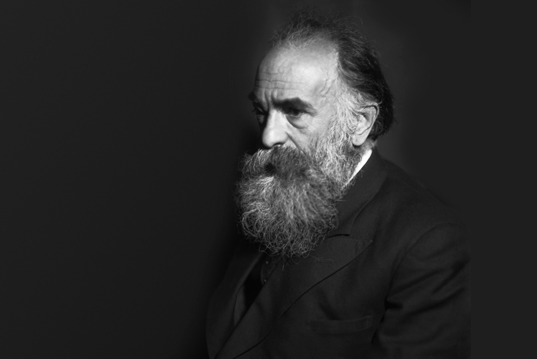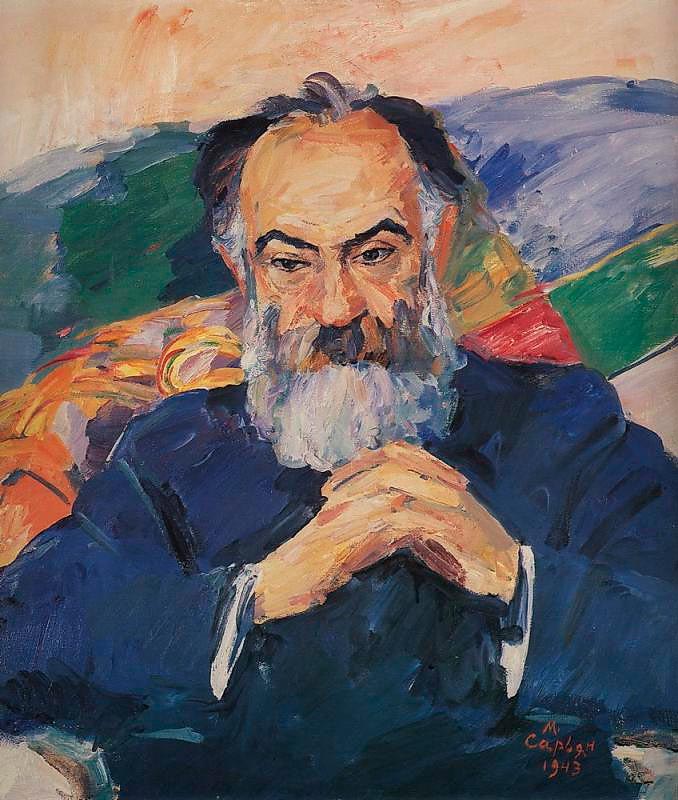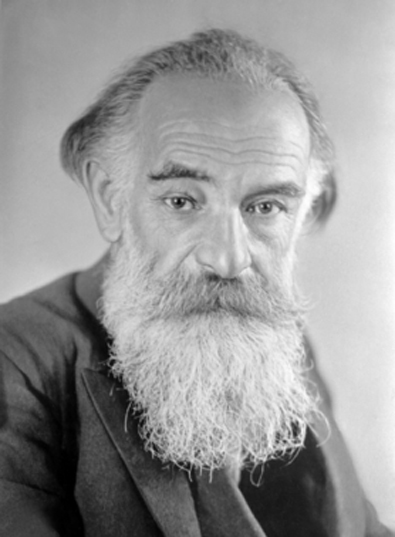Joseph Orbely was born in March 8, 1887 in Kutaisi. A year later, his family moved to Tbilisi, where in a multinational environment of Armenians, Russians, Georgians, Azerbaijans he met with different languages.
Joseph Orbely, who has studied Armenian (and not only Armenian) culture, art and history, was from family with aristocratic origin. Orbely family derived from Mamikonian and Zakarian made a great contribution to the cultural and social life. In the 13-15 th centuries Orbelian clan seized Syunik. According to the historian of this family Stepanos Orbelian, name Orbet associated with the eponymous castle in a village in Georgia[1, p.2].High education was very important for Orbely family , knowing native cultures, and knowing several languages. The eldest of the brothers Orbely, Ruben considered the founder of hydro archaeology and the historian of underwater technology. He, through his education and researches could seriously put a new direction in science, which helped in large spaces detect underwater cultural values and represent them more systematically. Middle brother – known physiologist Levon Orbely graduated from the Military Medical Academy in St. Petersburg. He is considered one of the greatest physiologists of the 20th century, who opened the unexplored secrets of the human body by results of deep and daring researches, thus enriching the medicine and physiology.
Joseph Orbeli studied in third gymnasium of Tbilisi. Orbely at school showed phenomenal dedication and curiosity. In addition, he studied with the teachers. Joseph Orbely’s father also took care of his son to learn some trade, so the young Joseph knew carpentry[1, p. 7]. In high school Orbely got only high ratings and has made progress in the field of historical and philological sciences.
After graduating from high school,17 years old Joseph Orbely moved to St. Petersburg and without examination enters the Imperial University department of History and Philology. He studied with such prominent scientists as S.Zhebelev, S.Rostovtsev, F.Zelinsky Orientalist Y. Smirnov, V.Beneshevich and others[1, p.7]. During his studies, the young student was increasingly fascinated the East, culture and history of Armenia, Georgia, Iran. In 1907 Orbely involved in the excavations of Ani, and a year later enters the Faculty of Oriental Languages of the University. Devoting himself Oriental Orbely has not forgotten about classical philology, which he regarded as a necessary foundation for understanding of Asian cultures. Love and interest in philology and antiquity Orbely retained until his death[1, p. 7].
Orbely brilliantly graduated from the Faculty of Oriental Languages, at the same time having passed a full course of History and Philology. In addition to an excellent education, he gained invaluable knowledge on excavations in Ani. Every summer Orbely participated in archaeological expeditions, heading the museum of Ani’s antiquity, which was created by private resources. According to the project of Orbely and S.Poltoratsky in September 1908 finished the new museum’s construction.
On the basis of the experience gained in Ani, Orbely in the “Series of Ani” created and published a guide of the city, then he has published a list of materials that were stored in the museum, and all found their place in the essay “The ruins of Ani”.
Joseph Orbely for proper playback the graffities inside the Church of the Apostles, worked at night by the light incident at an angle. Locals call this light “the spirit of Ani.”
Last excavations at Ani were held in 1917. Turkish battalions of Kyazim Karabekir logged in Ani and destroyed all that N.Mar and his staff collected with such trepidation all these years, also destroyed Ani Museum of Antiquities.
Excavations of Ani had great value in scientific (and not only scientific) life of Joseph Orbely. In addition to the excavation, Orbely also performed scientific journey. September 22, 1910 at a meeting of the Academy of Sciences of Russia, on the proposal of N.Mara had decided to send Joseph Orbely to Van. The main purpose of the trip was to study the dialect, so hard, but very important mission.
1st July 1911 Orbely started his journey from Batumi to Van on the way passing through Constantinople, Bayburd and Erzurum. In a way known scholar photographed and described the architectural monuments, copied wall inscriptions. Joseph Orbely has also undertaken a short trip to Moks, where he remained for five weeks. Here Orbely collected materials of Moks’s dialect, made a special dictionary, which summarizes all the words and phrases of everyday life on field work, crafts, names of animals and plants, in a word, all that can be seen around [1, p. 12].
During his stay in Van Joseph Orbeli starts partial excavations in “Toprak Kale”. Purchased from local merchants archaeological and ethnographic materials Orbely transferred to the Hermitage museum.
On his return to St. Petersburg Orbely started deeply study urartology, beginning what was put in Van. In 1922, published the work of the young scientist “Expedition to Van in 1916”. By the time Orbely was already recognized as a scientist who had 21 printed work, and taught in the Imperial University of St. Petersburg.
In May 1920, Orbely was elected as a supervisors of publishing department of the Academy of History of Culture, and in 1921 became director of printing of the Academy of Sciences. These years were difficult for printing: there was no electricity, no paper, no high-quality employees. Orbely nevertheless manage to gather a group of researchers and published the first volume of the “History of Material Culture of the Russian Academy”. In 1918, he published the works of 7th century Armenian mathematician Anania Shirakatsi “Problems and Solutions”. Publication of the book helps the scientist’s wife Maria Qerobovna.
1st November 1920 Orbely starts to work at the Hermitage, as head of the Fund. After that, he headed the Department of Islamic East St. Petersburg University.
1920 scientist refuses to work in idatelstve. 1919-1922 gg. Orbely taught at the Institute of Archaeology, a year worked at the Institute of Art History, participated in reconstructional works at Lazarev Institute.
In 1927, Joseph Orbely became the head of the chair of East, which he created himself. In 1934, a scientist appointed as a assistant director of the Hermitage, a little later – as a director. Over the years, Joseph Orbely raised the Hermitag to a new level, organized many exhibitions, symposiums, congresses. Not forgetting archaeology, though he rarely took part in the excavations, enriching with discoveries the Hermitage’s collection.
Joseph Orbely contributed to the development of science and culture in Armenia. In 1938 he was elected as a president of the Armenian branch of the Academy of Sciences of the USSR. He founded a new scientific institution, watching their growth and consolidation.
Since the beginning of the Great Patriotic War it was necessary the evacuation of the treasures of the Hermitage. These works were perfectly organized by Joseph Orbely, for which the scientist was awarded with Order of Lenin.
In March 1942, Orbely came to Armenia. In 1943 he founded the Academy of Sciences of the Armenian SSR. The great scientist was one of the founders of the Armenian Academy and was elected its first president [1, p. 22]. With the creation of the Academy of Sciences in Armenia began an intensive development of the natural sciences, at the same time the economy too. More widely developed history, linguistics, philology.
In 1947, Joseph Orbely made a decision to refuse the position of the president of Academy of Sciences, since it was difficult for him to lead two large structures such as the Hermitage Museum and the Academy of Sciences.
In 1947, acamedician returned to Leningrad and begun the reconstruction of the destroyed Hermitage. After the war, he returned the evacuated treasures to the museum. Orbely step by step have started to revive the rooms of the museum,that had been destroyed during the war, he started organize exhibitions.
In 1951, after more than thirty years of leadership the Hermitage Orbely was suddenly removed from his director position.
In the 1951-55 scientist working on his unfinished works and their publication.
In 1955, Joseph Orbeli was elected Dean of the Faculty of Oriental Studies of Leningrad University, and in 1956 he became a professor at the chair of the Middle East in the same faculty. From 1956 to the end of life Orbely as a supervisor headed the Institute of Oriental Studies of the Leningrad branch of the Academy of Sciences of the USSR. Orbely offers all possibilities to young scientists produced a generation of serious scientists.
Academician Joseph Orbeli died February 2, 1961 and was buried in St. Petersburg at the Theological cemetery.
1.Հովսեփ Օրբելի, խմբագիր՝ Հրանուշ Խառատյան, Ե., 2012
Video library: “Joseph Orbely” film.







Leave a Reply